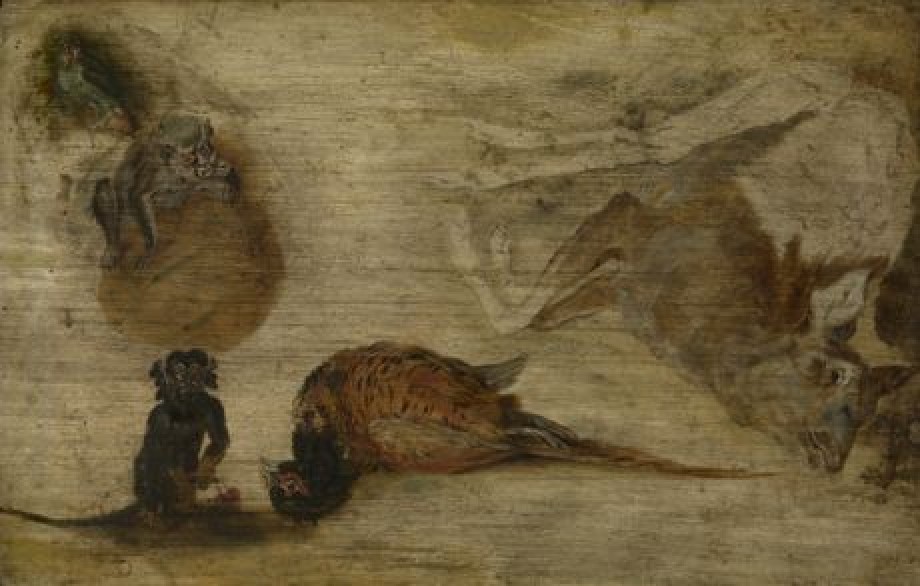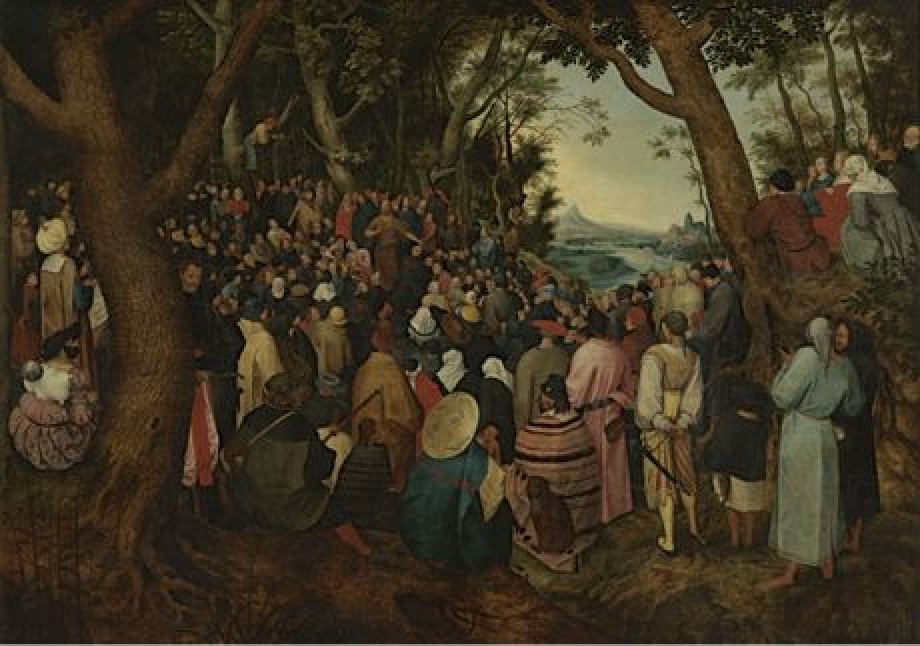
Jan I Brueghel
More about Jan I Brueghel
Jan Brueghel I is a painter and a draftsman born in Brussels. He comes from an artistic family and is along with his elder brother Pieter II (1564-1638) a son of Pieter I Bruegel (1526/30-1569). He is the father of the artists Jan Brueghel II (1601-1678) and Ambrosius Brueghel (1617-1675). In the first place, he is trained by his grandmother Mayken Verhulst (ca. 1518-ca.1599), who teaches him how to work with watercoulor. Brueghel is influenced by the work of his father and is the instructor of Daniël Seghers (1590-1661).
Brueghel is a successful and influential artist who becomes the court painter of Archduke and Duchess Albrecht and Isabella, maintains a life-long relationship with Cardinal Federico Borromeo (1564-1631) in Milan and receives commissions from the Emperor Rudolf II and Sigismund III, King of Poland. He is very productive and leads a large studio.
Brueghel is a still life specialist and often works with other artists such as Tobia Verhaecht (1561-1630), Joos de Momper II (1564-1635), Hans Rottenhammer I (1564-1625), Peter Paul Rubens (1577-1640), Hendrik van Balen I (1573-1632), Sebastiaan Vranx (1573-1647) and Frans Francken II (1581-1642). His role in the collaboration consists mainly in the painting of the landscape and/or still-life parts.
One of Brueghel's nicknames is Velvet Brueghel because of his mastery with regards to expressing fabrics. He is an innovator of the still life, especially with regards to floral still lives. A very precise technique to the core layers the detailed and virtuoso art of Brueghel. He is especially proficient on the small scale, as indeed his work often gives the quality of a miniature. Brueghel's flower vases and floral wreaths carry the motif of vanitas. He does not respect the blooming time and he analytically goes to work on the study of Nature.
Brueghel is one of the innovators of the art of landscape painting and he introduces various variations to the forest landscape and the paradise landscape, in which manipulates diagonal views. The painter also engages in cityscapes, seascapes, harbours, scenes of Hell and hunting pieces. At the beginning of the 17th Century, he produces minutely arranged allegorical art chambers and is hereby one of the earliest practitioners of the genre. Cycles such as the Four Elements, the Four Seasons and the 5 Senses are also made.
1568
Jan Brueghel I is born in Brussels
1578
His grandmother Mayken Verhulst takes pity on the grandchildren after the death of their mother. They move to Antwerp and Brueghel learns from her how
to work with watercolours. He learns to work with oil paints from Peeter Goetkint (died 1583).
1589-1596
Brueghel leaves for the Italian peninsula via Cologne.
1590
The artist is present in Naples.
1592-1594
Brueghel stays in Rome and has good contact with fellow artist Paul Bril (1554-1626). Among other things, Brueghel in the service of Cardinal Ascanio Colonna.
1595-1596
Brueghel is present in Milan. There he does work for Cardinal Federico Borromeo with whom he has a long and successful professional connection.
1596
The artist is present in Antwerp. Until his death, he is almost exclusively active in Antwerp.
1597
Jan Brueghel I becomes is a Free Master in the Saint Luke Guild in Antwerp.
23 January 1599
Isabella de Jode and Jan Brueghel I are married in the Antwerp Cathedral of Our Lady.
13 September 1601
His first son, the eventual painter Jan Brueghel, is born. Rubens is his godfather.
4 October 1601
The artist is registered in the burgher's books of Antwerp in the following way: "4 Octobris 1601, Jan Bruegel, Peetersone, schilder (painter), van Bruessele". Earlier that year in September, Brueghel is elected dean of the St. Lucas guild, but the nomination fails because he is not a citizen of Antwerp. Via the registration in the burgher's books, the situation is resolved and in 1601, Brueghel becomes dean.
1602
Brueghel is again elected as dean.
1603
Paschasia Brueghel is born. Rubens is her godfather. Isabella de Jode dies. It is suspected that there is a causal relationship between the birth of Paschasia and her death.
Summer 1604
Brueghel visits Prague.
20 September 1604
The artist buys the house, "De Meerminne" in the Lange Nieuwstraat in Antwerp.
April 1605
Jan (I) Brueghel marries Catharina van Mariënburg. The couple has 8 children.
1606, 1609, 1610 and 1613
The artist is present in Brussels and is the court painter of the Archduke and Duchess Albrecht and Isabella.
28 August
Brueghel receives 3625 guilders from the court in Brussels for the completion of various works.
October 1610
Rubens takes on the role of secretary for his friend for the first time. Between 1610 and 1625, Rubens writes circa 25 letters in Brueghel's name. All of them are destined for Cardinal Borromeo.
Circa 1612-1613
His friend Peter Paul Rubens paints Jan Brueghel and his Family (Courtauld Institute, London).
1613
Brueghel travels with Rubens and Hendrick van Balen I to the Northern Netherlands.
1614
Duke Johan Ernest van Saksen visits Brueghel and Rubens in their studio.
27 August 1615
Four of his paintings are offered to the Archduke and Duchess Albrecht and Isabella by the Antwerp city magistrate.
1618
The Antwerp city magistrate gives a commission to 12 important painters from the city to do work for the Archduke and Duchess Albrecht and Isabella. Under Brueghel's lead, they work on a cycle regarding the Allegory of the Five Senses. The participating group consists of artists such as Rubens, Frans Snijders (1579-1657), Frans Francken II, Joos de Momper II, Hendrick van Balen I and Sebastiaan Vrancx. A fire in 1713 destroys the works.
9 March 1619
The artist buys a third house: Den Bock in the Antwerp Arenbergstraat.
6 August 1623
Clara Eugenia, one of Brueghel's daughters, is baptised. Archduchess Isabella and Cardinal Borromeo are her godparents.
13 January 1625
Jan Brueghel I dies in Antwerp from complications of cholera.
3 June and 23 June 1627
Jan's inheritance is divided amongst his wife and children from both marriages. Rubens, Paulus van Halmaele (1586-1643), Hendrick van Balen I and Cornelis Schut (1597-1655) execute his last will and testament. Rubens becomes the guardian of the Brueghel children.
Text: Matthias Depoorter

